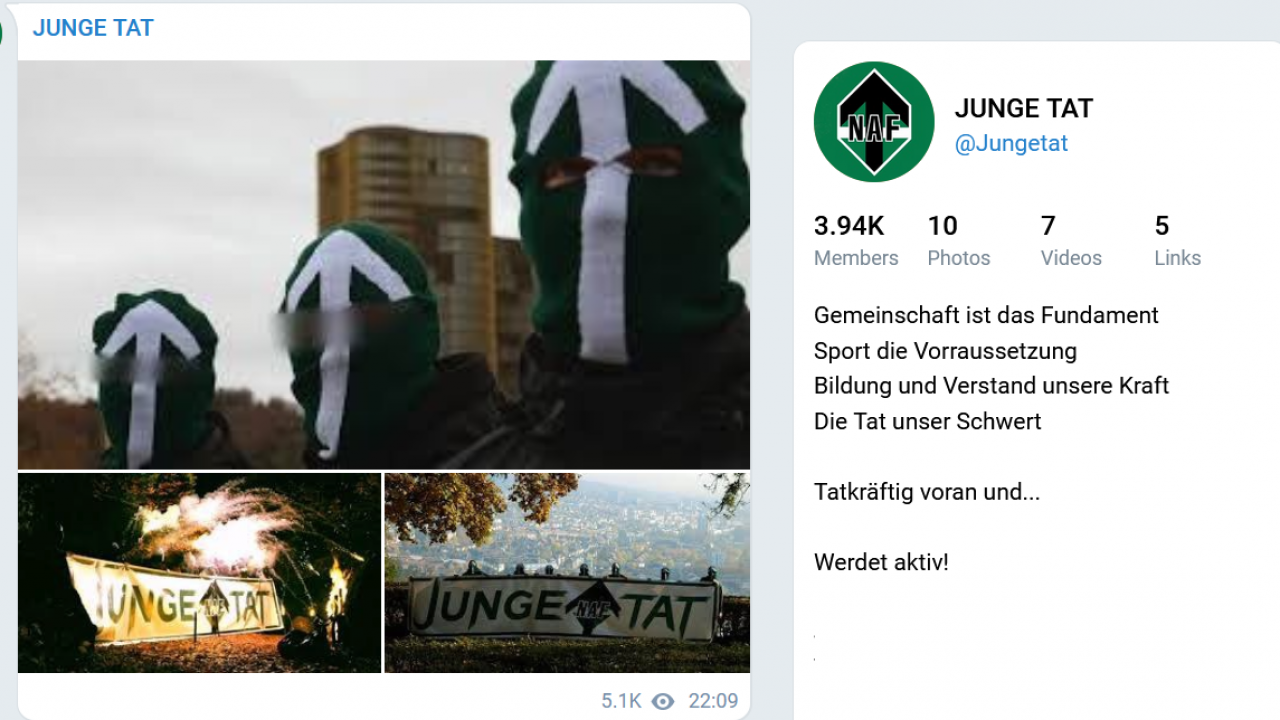
On the global stage, QAnon’s role was negligible until the spring of 2020. Since that time, however, the conspiracy ideology has gained more and more followers outside the USA, with a report by the Institute for Strategic Dialogue (ISD) concluding that the English-speaking countries of Canada, Great Britain and Australia have been especially affected. Between November 2019 and June 2020, Germany was next on the list after these countries.
During the same period, QAnon attracted more followers in other European countries, including France and Italy. The conspiracy ideology also gained some political power: in the USA, where QAnon undoubtedly has its largest following, two followers of the movement were elected to Congress in 2020. Additionally, some QAnon candidates now hold political offices at state level. In Germany, only individual groups within the German far-right party Alternative for Germany (AfD) and their youth organization Young Alternative (Junge Alternative) have been linked to the conspiracy ideology so far. The Junge Alternative group for the state of Baden-Württemberg, for example, used the hashtags #WWG1WGA (a popular QAnon slogan) and #qanon on Facebook. A regional AfD page from Leipzig shared a video of the singer and conspiracy theorist Xavier Naidoo on Facebook along with a post calling for people to “form their own opinion” about adrenochrome – one key QAnon conspiracy narrative states that a fictitious elite extracts the substance adrenochrome from the blood of tortured children, despite it being simple to produce in a laboratory.
But how exactly is the conspiracy ideology QAnon spreading in Germany? While the various imageboards on which Q’s posts, known as “Q-drops”, are posted are difficult to navigate for the general public, the content of the individual posts is also reproduced on websites that are easier to comprehend, thus making QAnon accessible to a much wider audience. These websites provide infrastructure that has been essential for turning the former fringe phenomenon QAnon into a conspiracy ideology palatable to the masses. Additionally, there is a number of QAnon influencers who have made it their business to analyze Q-drops – in a similar manner to theologians who analyze the Bible – because many of the original posts are deliberately vague. The resulting room for interpretation also makes the content more difficult to refute. And while the analysis of individual posts is a central part of the conspiracy ideology for all its followers, the interpretations of individual influencers facilitates low-threshold access to QAnon.

Dark social media platforms such as Telegram offer the perfect tools for spreading conspiracy narratives associated with QAnon. For a long time, though, QAnon content could also be shared easily on more common social media platforms by individuals as well as groups and channels. Some of them had names that very clearly declared their affiliation with QAnon. Various QAnon subcategories were formed in response to the platform’s target group. Instagram, for example, is home to a movement dubbed “QAmom” by Rolling Stone and “Pastel QAnon” by QAnon expert Marc-André Argentino, with the conspiracy ideology being disseminated – frequently by women – using a combination of softer language and pastel tones. The hashtag “#savethechildren”, referring to QAnon’s focus on the alleged abuse of children by an elite cabal was often used as a particularly relevant call to arms.
On Facebook and Telegram, QAnon groups became a melting pot of different conspiracy narratives that were integrated into QAnon lore. This ability to integrate different views is likely one of the reasons why QAnon has become so popular. Furthermore, Facebook’s algorithm generates group and page suggestions based on the interests of users and their acquaintances. In other words, the algorithm will suggest similar groups to users who have already declared an interest in conspiracy stories and who may belong to an associated group.
Tracking the Spread of Q

How did QAnon spread in German-speaking spaces online? For this analysis, data from 50 YouTube channels, 48 Telegram channels with predominantly QAnon content, and 34 Telegram groups which primarily share QAnon content were evaluated. Some YouTube channels have been deleted from the platform in the meantime. False information about the COVID-19 pandemic has been distributed via QAnon channels and groups across all platforms. In mid-March 2020, there were COVID-19 cases in every German federal state. Schools and daycare centres were closed and entry bans were issued. On March 22, strict restrictions on leaving the home and person-to-person contact came into force throughout Germany. At the same time, the number of users of Telegram channels and groups indicated that interest in QAnon content and QAnon influencers began to grow during the pandemic. Groups and channels that had previously attracted no more than 10,000 subscribers or 1,000 members suddenly exploded as the COVID-19 pandemic took hold. We found a total of 48 telegram channels predominantly containing QAnon content through to the end of October.

This increase in users during the pandemic can be explained by analyzing the second-largest QAnon channel on Telegram. On March 17, roughly 21,000 users were subscribed to the channel Qlobal-Change; three months later, on June 17, the channel had more than 111,000 subscribers. The number then rose steadily, peaking at over 127,000 by the end of October. Telegram channels are one-way communication channels, and looking at the number of subscribers alone can often be misleading: voyeurism and the like often leads people to subscribe to a channel. A better measurement of their reach is obtained by looking at how many people have actually seen their messages. At the beginning of February, around 9,000 people on average had viewed posts on Qlobal-Change; by the beginning of April, the figure stood at around 60,000 people. In addition, 34 groups that primarily distribute QAnon content were found on Telegram, with the number of members rising substantially in March. While there were only around 6,500 users on March 17, this figure had risen to more than 50,000 in mid-June and 79,505 by the end of October.

Oliver Janich was the largest German QAnon influencer for a long time. By now, however, many of his accounts have been deleted. After his removal from Instagram (2019) and Twitter (2020), his YouTube channel was deleted on October 22. The former journalist has been part of the German conspiracy scene since the September 11 attacks. He has been posting QAnon content since 2017, particularly on YouTube – long before it attracted the attention of the wider German public. He also shares a great deal of QAnon content on Telegram via “Oliver Janich öffentlich”, the largest German-speaking QAnon channel. Already high, his number of subscribers rose from 50,400 on March 17 to 125,000 on June 17 and over 152,600 by the end of October. For a long time, Janich was also one of the most popular YouTube channels distributing QAnon content. Before it was deleted, it had 280,000 subscribers. A video uploaded on April 2, 2020 titled “Adrenochrome – Xavier Naidoo cries for our children”, which contains a clear reference to QAnon, amassed over 495,000 views.
Of the 50 YouTube channels distributing QAnon content that were analyzed for this report, 18 had videos that had been viewed more than one million times. Although most of these channels share conspiracy theories other than QAnon, three do refer to Q in their names, one of which is Qlobal-Change. Created on October 19, 2018, this channel’s view count clearly shows that the general interest in QAnon increased in conjunction with the outbreak of the pandemic. In early January, the channel’s videos rarely attracted more than 20,000 views a day. From mid-March onward, however, the views more than doubled, while on some days the channel received well over 100,000 views.

Report: QAnon in Germany
de:hate – Amadeu Antonio Stiftung
Publication: 2020
Link to PDF
This is a translation of the German version of the report.


